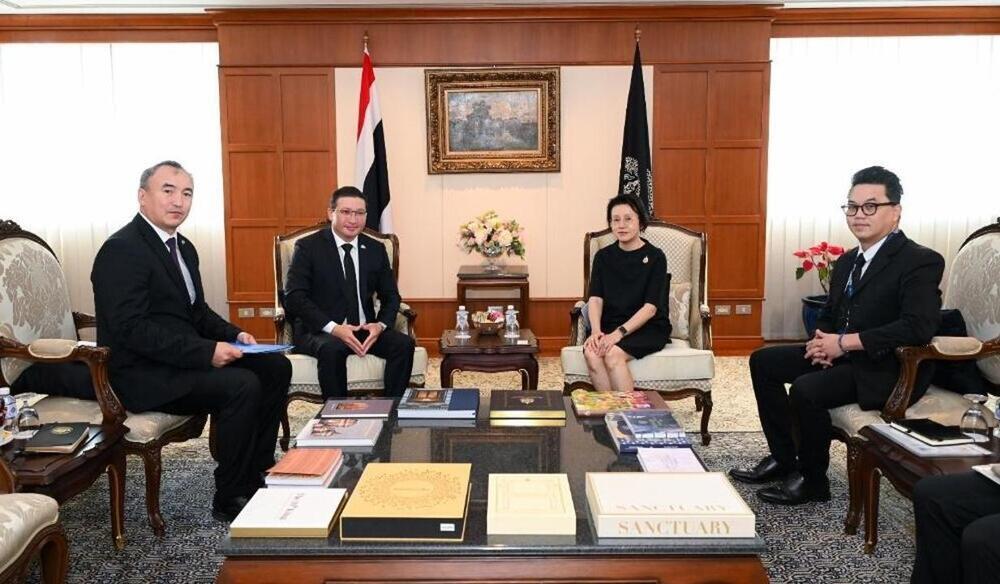
Images | gov.kz
Margulan Baimukhan, Ambassador of the Republic of Kazakhstan to the Kingdom of Thailand, held a meeting with Eksiri Pintaruchi, the Permanent Secretary of the Ministry of Foreign Affairs of Thailand. The parties reviewed the current state of bilateral relations, noting the steady growth of cooperation and the high level of trust between the two countries, Ministry of Foreign Affairs of the Republic of Kazakhstan
reports.
The Ambassador emphasized that Kazakhstan and Thailand have built a solid political dialogue supported by active exchanges of visits and the consistent expansion of the legal framework. Over the past two years, the sides have signed agreements on visa-free travel, trade and economic cooperation, and memorandums covering digitalization, tourism, agriculture, and international development.
Both sides expressed mutual interest in further strengthening political contacts and expanding cooperation in 2026, noting the importance of enhancing interagency coordination across key areas of the bilateral agenda.
Economic cooperation was central to the discussion. Kazakhstan remains Thailand’s largest trading partner in Central Asia, accounting for around 70% of Thailand’s trade with the region. Opportunities for expanding trade in agriculture, mechanical engineering, energy, and tourism were reviewed.
The Kazakh side underlined significant export potential in grain and meat supplies, particularly in the context of Thailand’s initiative to establish a regional food hub. The parties also stressed the importance of finalizing agreements on investment protection, avoidance of double taxation, and veterinary and plant quarantine regulations.
Collaboration in subsoil use and rare-earth metals was highlighted as a priority. Kazakhstan, holding substantial reserves of strategic raw materials, proposed exploring joint projects to meet Thailand’s growing demand for high-tech inputs.
Digital cooperation was another important area, including digital trade, fintech, cloud technologies, cybersecurity, and smart logistics. The Kazakh side presented its initiative to establish a UN ESCAP Digital Solutions Center to be located in Almaty.
Transport connectivity was addressed as a key component of the partnership. Currently, 23 direct flights per week operate between Kazakhstan and Thailand, carried out by Air Astana, SCAT Airlines, and Thai AirAsia X. The new Shymkent-Bangkok route launched in December has further enhanced logistical and tourism ties. The parties also noted the potential of the Middle Corridor and future multimodal transport links under the China-Laos-Thailand railway project.
The Ambassador acknowledged the growing tourist flow from Kazakhstan to Thailand and expressed gratitude for the support provided in opening the Consulate of Kazakhstan in Phuket, with the official inauguration planned for January 2026.
The sides reaffirmed their aligned positions on major international issues and their readiness to enhance cooperation across multilateral platforms.
At the conclusion of the meeting, Ambassador M. Baimukhan stressed that Kazakhstan views Thailand as a key partner in Southeast Asia and remains committed to deepening political dialogue and expanding economic cooperation.

